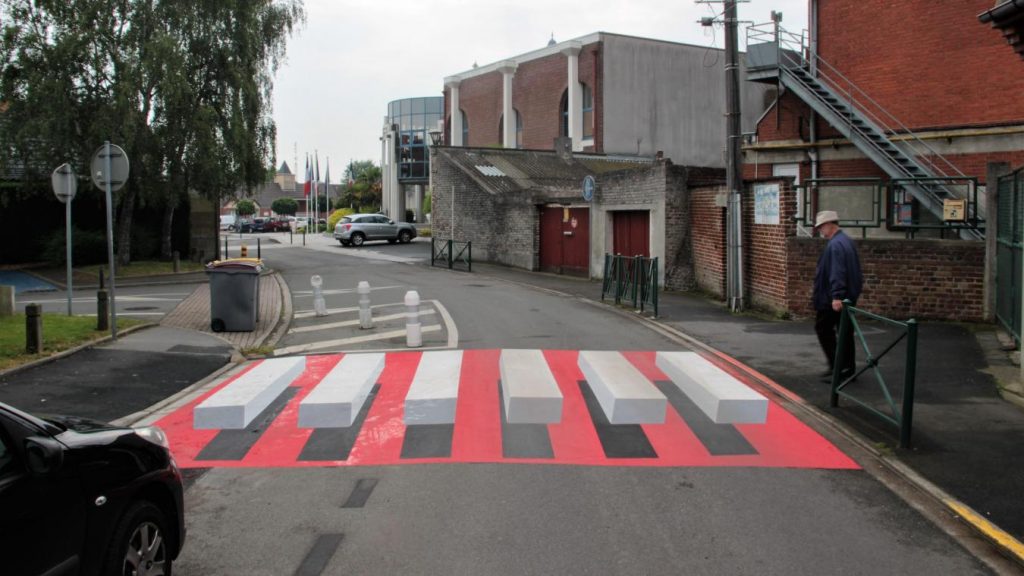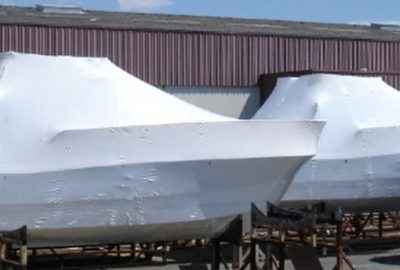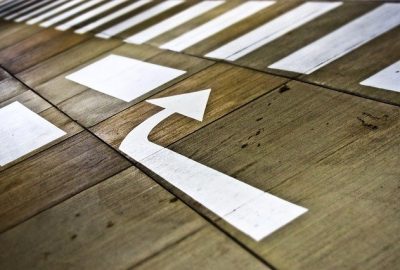In every municipality, even the smallest ones, pedestrian crossings are posing an issue, especially the lack of respect by motorists. Pedestrian lights, 30 km/h zone, speed bumps, bottlenecks, speed cushions (a speed bump made up of two raised elements that allow both wheels to pass through) or a speed sign with a smiley face are some of the devices put in place. They are not always effective and represent a significant investment. A new solution from India is gaining a following in France: 3D marking, achieved by thermal marking.
The origins of the 3D pedestrian crossing
Creating artificial gradients or bypasses (such as bottlenecks) on the roadway requires costly adjustments. Moreover, even if the standards are respected, the speed bump and the bottleneck can be dangerous if you are not paying attention, especially for two-wheeled vehicles.
In 2012, the city of Ahmedabad in India tested an ingenious process by creating a visual playing on an optical illusion that gives the impression that the pedestrian crossing is three dimensional. Closer to home, Iceland was inspired by it, before France tested it in 2017, in Cysoing in the Nord department.
Since then, the 3D pedestrian crossing has been tested in other larger cities: Lyon, Clermont-Ferrand, Lyon, Morlaix, Limoges, Grigny and Paris, among others.
The aim is to reduce the number of accidents, which are sometimes very serious and even fatal. In 2016, of the 559 pedestrians who died after being struck by a vehicle, 27% – or 150 – were crossing on a pedestrian crossing.
3D pedestrian crossing standards
The 3D pedestrian crossing is officially called “3D ground markings with a three-dimensional effect for pedestrian crossings”. Its abbreviation is PP3D.
For its experimental phase, which lasted until the end of 2020, it was to be installed in place of an existing conventional pedestrian crossing. It should be indicated ahead of the crossing by a triangular danger sign with an exclamation mark. This could be supplemented by signs indicating that this was an experimental area.
For the moment, the minimum distance between two 3D pedestrian crossings is set at 100 metres.
The fines for non-compliance are the same as for the conventional ones: fine of €135, reduced to €90 for prompt payment.
Thermal marking technique for 3D pedestrian crossings
The cost of the 3D pedestrian crossing is much lower than any other design, as it is created using thermo-marking strips that are applied with a heat shrink gun.
To ensure that the marking tape adheres properly, the ground is cleaned and degreased beforehand. If the ground imperfections are too great, the holes must be filled in.
The first job consists of applying a primer coat of a specific coating that allows the marking to become durable.
The technician then applies the thermo marking tape using a heat shrink gun that sends out hot air. This air softens the strip which smooths out the bumps on the ground and will become embedded in it. The gun runs on gas. Connected to a bottle on its trolley, the fitter has a hose, several metres long, with which to work unhindered. The tip of his shrink gun allows it to precisely direct the air to evenly heat the strip to the ideal temperature.
After a short drying time, the road is instantly usable. The marking then withstands millions of passes and is not affected by weather conditions, sun or rain, low or high temperatures.
Après un temps de séchage court, la route est instantanément utilisable. Le marquage résiste ensuite à des millions de passages et n’est pas impacté par les conditions climatiques, soleil ou pluie, basses ou hautes températures.








